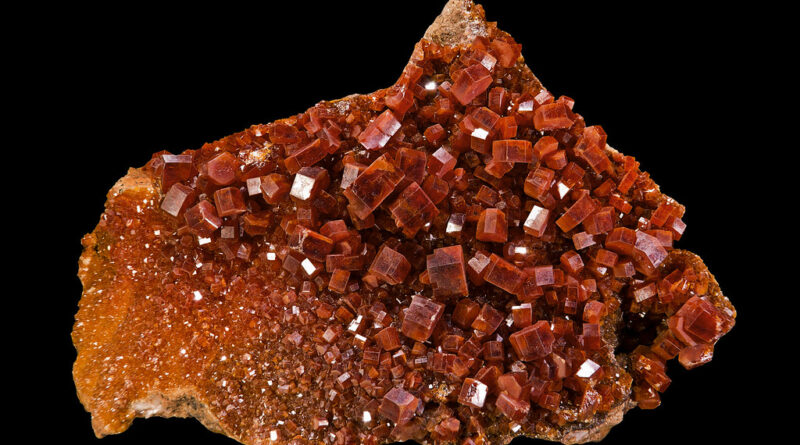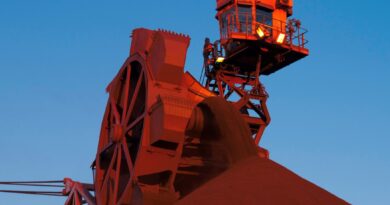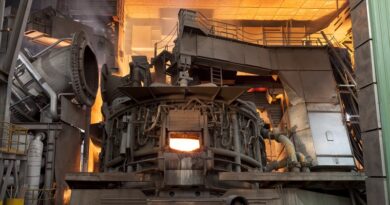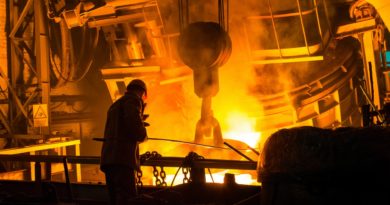Vanadium shows disconnect between steelmakers in China and the rest of the world
For steel-driven commodities such as vanadium, 2020 was marked by an economic disconnect between China and the rest of the world, with a wide divergence in terms of steel consumption and production.
Driven by stimulus measures and infrastructure spending, China’s steel production reached an all-time high while the rest of the world, impacted by repeated lockdowns, posted a large y-o-y drop, with developed economies being the most impacted.
Ferroalloys such as vanadium have been widely influenced by this economic de-synchronisation. Due to its high exposure to China and infrastructure through rebar production, it also benefited through 2020 from the ongoing implementation of rebar standards and some reverse substitution away from niobium.
With strong demand in China and very weak demand in the rest of the world, Chinese prices traded at a premium to European prices and, as a result, substantial volumes were shipped to China. Due to this price differential, China, a traditional net exporter of vanadium pentoxide (V2O5) became a net importer in 2020. The Chinese price premium peaked in Q3 2020 at its highest level since Q4 2018, before declining in Q4 as expectations of a demand rebound in the rest of the world gained momentum.
The outlook for vanadium through 2021 largely depends on the evolution of the COVID-19 pandemic. Roskill’s base case is that the pandemic restrictions will gradually be relaxed over the course of 2021 with increased availability of vaccines and that the world economy will see a global re-synchronisation following a realignment between China and the rest of the world.
The vanadium market is set to tighten over the year and more so in 2022, driven by higher demand but also by tighter supply, as Chinese steel slag producers are running close to capacity. Outside of China, incremental supply will also be limited and come mainly from AMG’s new facility in Ohio, USA, and Bushveld’s Vametco gradually increasing its production in South Africa.
Roskill believes that vanadium prices reached a low in Q4 2020 and should gradually rebound in 2021.
There are several key developments which will reshape the vanadium industry over the decade. On the demand side, although steel will continue to dominate the market, primarily with rising consumption from emerging countries, non-steel applications will gain momentum.
Vanadium redox batteries (VRBs) could become a major market for vanadium amid growing demand for energy storage, should the technology develop. Demand from the aerospace industry will also recover post-COVID-19.
These new applications should translate into higher demand for premium products such as High-Purity V2O5 or V2O3. On the supply side, Roskill does not expect significant tonnages from new projects to enter the market before 2024.
However, the new IMO 2020 marine fuels regulation is likely to create a new source of low-cost supply coming from oil spent catalysts. Although uncertainty remains in terms of volumes and timeframe, secondary production is expected to have a material impact on vanadium supply over the decade. The interaction of these new developments will reconfigure the vanadium market in the years to come.
Roskill’s Vanadium: Outlook to 2030, 19th Edition report analyses the changes in terms of supply, demand and future pricing structure.
Roskill’s 10-year outlook also assesses whether existing producers can increase output, the viability of new projects under development entering production, and the likelihood of projects on care and maintenance to restart.
With thorough coverage of historical trends and detailed ten-year forecasts, Roskill’s report is the most comprehensive vanadium report on the market. It provides a full analysis of supply, demand, trade, and prices, complete with trends and risks geared specifically to the needs of industry participants, traders and investors.




